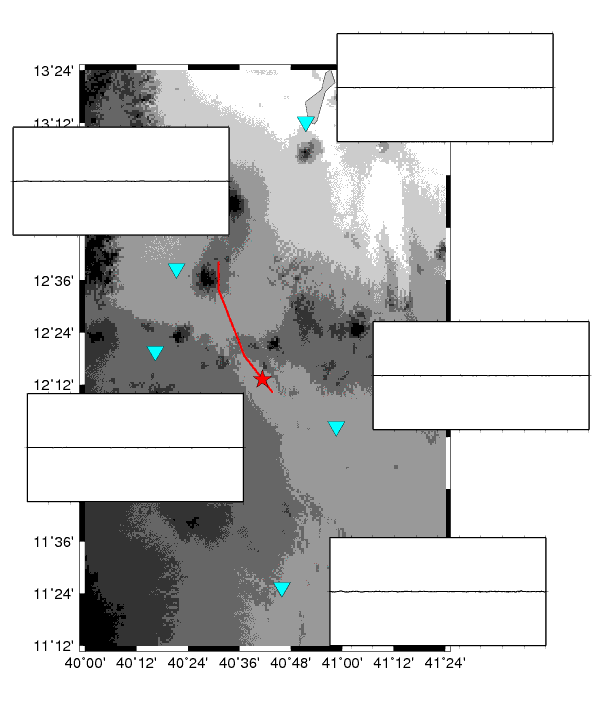
An example from Afar shows seismic waves arriving at different seismic stations (blue triangles); the earthquake must be located near the first seismometer the seismic waves reach.
Feeling the ground shake with seismology - how does it works
Earthquakes happen when faults slip or magma splits the crust. They send out seismic waves through the Earth just as dropping a pebble into water makes rings of ripples.
Seismographs record seismic waves. They contain a weight and a pen attached to a spring (below). The seismograph is bolted to the ground so during an earthquake it moves with the ground, whilst the weight and pen remain still. The pen moves across a rotating paper roll recording the seismic waves. This plot is called a seismogram and is used to understand earthquakes.
During an earthquake, seismic waves arrive at the closest seismograph first and later at ones further away. We use this information to locate the earthquake. An example from Afar is shown right. The station at which the seismic waves arrive first must be the closest to the earthquake. We estimate its location, then calculate what the arrival times at the other seismographs would be if this was right. We keep refining the location until it fits the arrival times for all the seismographs.

How a seismometer works.
